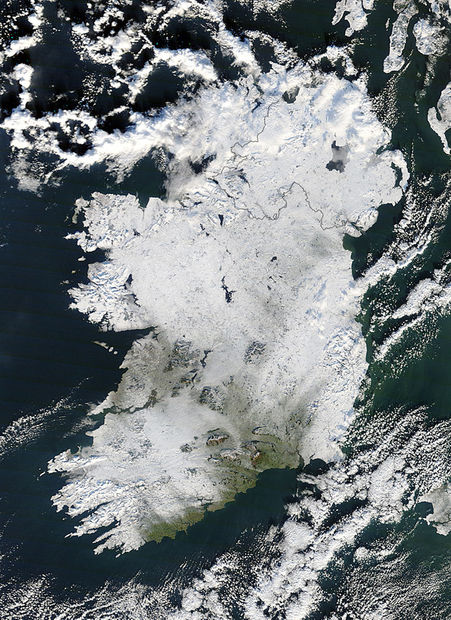
Ireland [usually] enjoys a "temperate ocean climate" (Cfb) based on the Koopen climate classification system. Such climates normally enjoy cool, cloud-covered summers and mild winters. Ireland's climate is also [usually] moderated by the warm waters of the Gulf Stream, which flows off the western shore. Snow commonly falls only in the highest elevations; dustings may occur elsewhere a few times each year. Significant accumulations anywhere in the country are rare.
The winter of 2009-2010 was unusually cold and snowy. Called "The Big Freeze" by the British media, it brought widespread transportation problems, school closings, power failures and twenty five deaths. A low of -22.3°C (-8.1°F) was recorded on January 8, 2010, making it the coldest winter since 1978/79.
Although it has just begun, the winter of 2010-2011 threatens to be just as challenging. The earliest widespread snowfall since 1993 occurred on November 24, primarily affecting Great Britain and Scotland. Two days later snow began to cover Ireland, and the continuing severe weather has taken a toll. It has disrupted air, road and rail travel, closed schools and businesses, and caused power outages. Livestock and horses have had difficulty finding grass to eat, some relying on volunteer feeding efforts for survival. Local temperature records were broken, including a new record low for Northern Ireland of -18.7°C (-2°F) at Castlederg on December 23. As of that date, 20 deaths had been attributed to the winter weather and associated hazards.
Jeff Schmaltz
MODIS Land Rapid Response Team
NASA's Goddard Space Flight Center, Greenbelt, Maryland.
Source: NASA.gov



Reader Comments
to our Newsletter